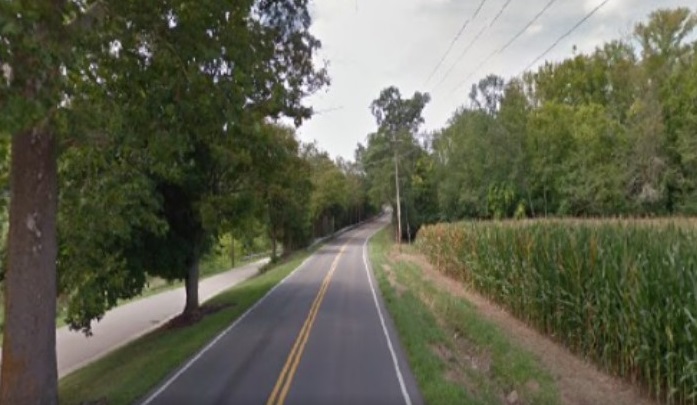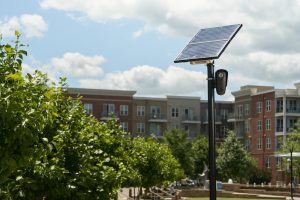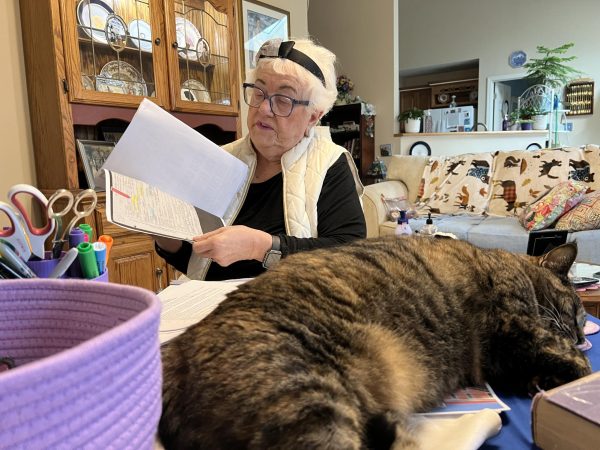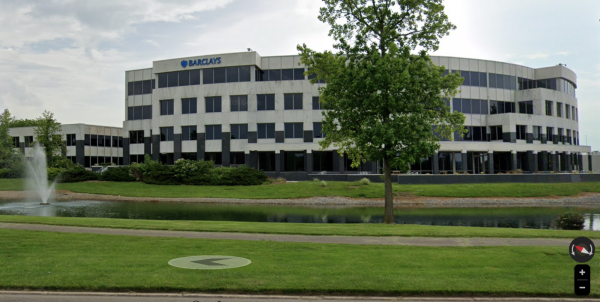Oxford City Council approved three-year lease to turn landfill into solar farm
Map provided by the city of Oxford
This aerial view shows the planned solar array (marked in yellow) adjacent to the Chestnut Fields project, which is expected to include a Butler County bus facility (marked in pink) and an Amtrak platform (marked in orange).
September 10, 2021
On Wednesday, Sept. 8, President Joe Biden announced an initiative to produce 45% of the nation’s electricity via solar power by 2050. One day earlier, Oxford City Council authorized a three-year lease option with a company to turn the city’s old 20-acre landfill into a solar farm.
Biden’s plan, laid out in a report that calls for doubling solar energy generation every year for the next four years and then doubling it again in 2030, will aid the goal of cutting the country’s carbon emissions in half by 2030. Though Oxford’s plans are not that ambitious, the city is also committed to reducing its carbon emissions.
At the Sept. 7 council meeting, City Manager Doug Elliott recommended the authorization of a three-year lease agreement with BQ Energy Development, LLC.

The project will be financed, managed and built by BQ Energy but leased by the city. “The City of Oxford desires to provide an economically viable source for the closed municipal landfill,” Elliott said.
As of June 10, the Oxford Observer reported more than 38 companies had contacted the city about building the solar field.
The city requested the applicants design, obtain approval from the Ohio EPA, receive approval for a Point of Interconnection with Duke Energy, finance, construct and maintain the system. “Five companies responded to the appeal, the city requested an interview with four and two responded for an interview,” Elliott said.
“The three-year lease agreement will allow time for the company to connect with the local utility companies and the Ohio EPA,” Elliott said. “Creating that point of interconnection with the utility companies can take a long time…They also have to work with the Ohio EPA to maintain the environmental integrity of the landfill.”
After this, the company can begin exercising the lease, which Elliott expects to be 25-30 years. During this time, BQ Energy would make a $10,000 payment to the city with an annual lease rate of $519.39 per acre.
Once all approvals have been obtained, building the site will take about a year, estimates Oxford Environmental Specialist David Treleaven.
BQ Energy has been working on solar projects, mostly for closed landfills, since 2008, according to the company’s website. The company is currently under contract with the Solid Waste Authority of Central Ohio to install a solar array on a 173-acre closed landfill south of Columbus, Ohio and is under contract with three other Ohio projects.
Elliott said all of the parts for the solar array are to be manufactured in the U.S., with the panels from Georgia, inverters from Cleveland, racking systems from Detroit and monitoring systems from Colorado.
At an April 20 city council meeting, Councilor David Prytherch said the solar panels could help power future projects in the Chestnut Fields area, such as the Butler County Regional Transit Authority buses and a proposed Amtrak station.
Chestnut Fields is the site of the old Talawanda High School. The school district sold the part of the site it owned to Miami University in 2013, and leased it back as a site for its school bus maintenance facility. That facility is scheduled to be moved to a new site next year to make way for the development of a public transportation hub. The old landfill is adjacent to the proposed transportation hub.
Treleaven said this project will help to reduce carbon emissions, contributing to the city’s goal of carbon neutrality by 2050.
“It’s a great use of a property with limited potential,” Treleaven said. “Due to Ohio Environmental Protections, there is really nothing else to do with the land.”























